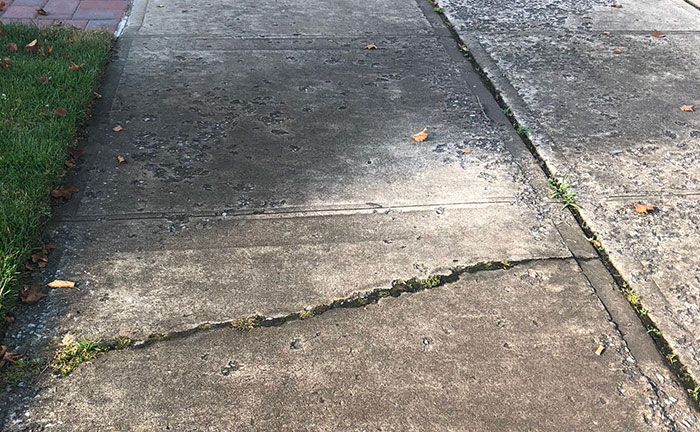Forum Photo by Michael V. Cusenza
“We need to maintain our trees and sidewalks, and we need to do it right,” Stringer said.
By Forum Staff
Homeowners waited on average 101 days after submitting a service request to have their tree-damaged sidewalks inspected—71 days longer than the City Department of Parks and Recreations’ own 30-day response target, according to an audit released Monday by City Comptroller Scott Stringer.
The analysis also found that NYC Parks’ average time from inspection to repair of tree-damaged sidewalks during Fiscal Year 2017 was 419 days, with one repair taking more than a decade to complete. The audit revealed that although NYC Parks compiles various statistics for its Trees and Sidewalks Indicator Report, it does not track the time frames in which sidewalks damaged by the roots of city trees are inspected or repaired. The comptroller’s review found that inspection data were missing from some NYC Parks’ records, and the agency failed to identify duplicate service requests in 23 percent of the sampled duplicates, impacting its efficiency, Stringer said.
The comptroller’s audit on NYC Parks’ Trees and Sidewalks Program also found:
• 449 NYC Parks-approved work orders for sidewalk repairs, each at a unique address, had remained open for an average of 523 days (1.43 years) as of Dec. 31, 2017, with the oldest having been open for 2,166 days (5.93 years).
• According to NYC Parks officials, the agency has no target time frame for how long it should take to repair a sidewalk once it is inspected and found to qualify for repair under the agency’s priority-rating system.
• During FY 2016 and FY 2017, NYC Parks received 16,558 service requests for tree-damaged sidewalks at 13,373 unique addresses and inspected only 27 percent of them within the agency’s own, internal, 30-day target.
• No inspection record was generated for 1,527 service requests at 1,509 unique addresses that NYC Parks closed, consisting of 475 cases that the agency appears to have found eligible for repairs, 909 cases that the agency appears to have found ineligible, and 143 cases, at 141 unique addresses, where the agency’s records lacked sufficient information to show how and why the service requests were closed and whether the customers’ requests had been addressed.
• NYC Parks did not consistently label service requests as duplicates when it received more than one request concerning a single condition and address. Auditors identified 1,494 duplicate service requests that NYC Parks failed to flag as duplicates (23 percent of the 6,446 duplicate service requests NYC Parks received in FYs 16 and 17). Of those, Parks inspected 187 unique addresses two or more times, duplicating its own efforts while other service requests remained open and unaddressed.
“Our street trees are some of our most vibrant neighborhood markers, yet New Yorkers often have to wait more than a year for basic maintenance. That delay could be the difference between an accident and a safe walk or passage for a stroller or a wheelchair,” Stringer added. “We can’t wait until the worst happens. We need to maintain our trees and sidewalks, and we need to do it right. When New Yorkers lodge a complaint, we can’t continue to delay or cut corners.”

